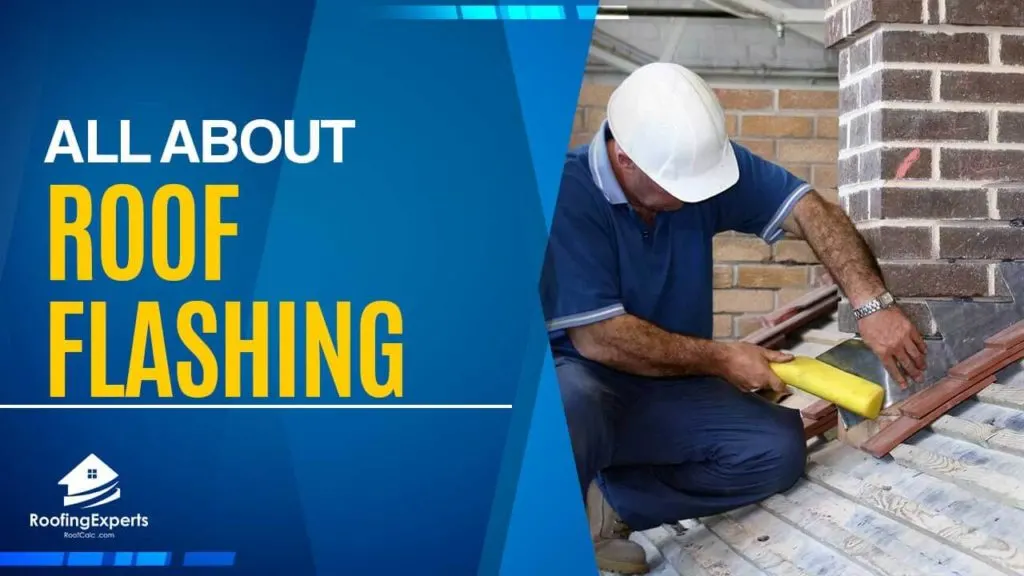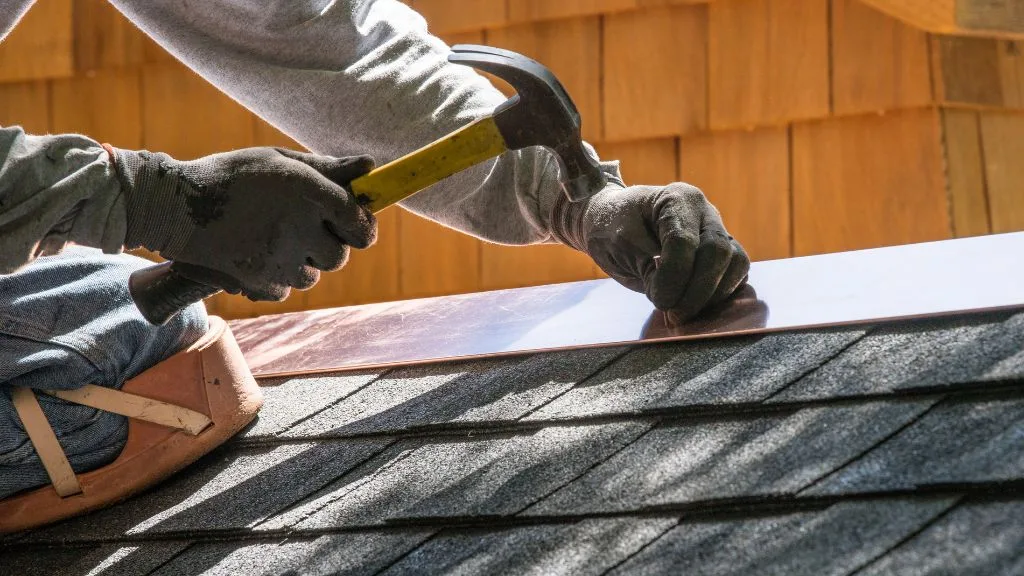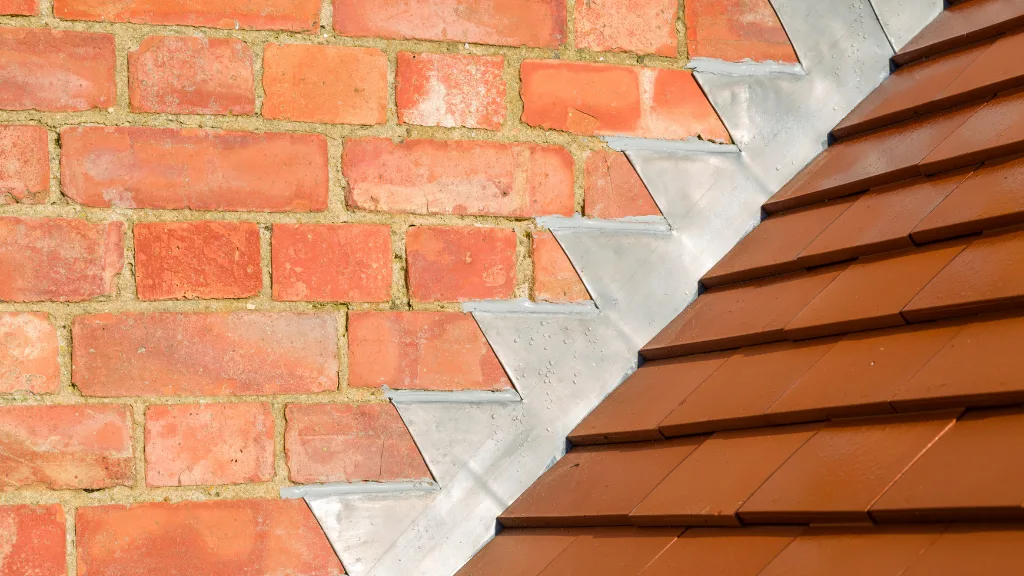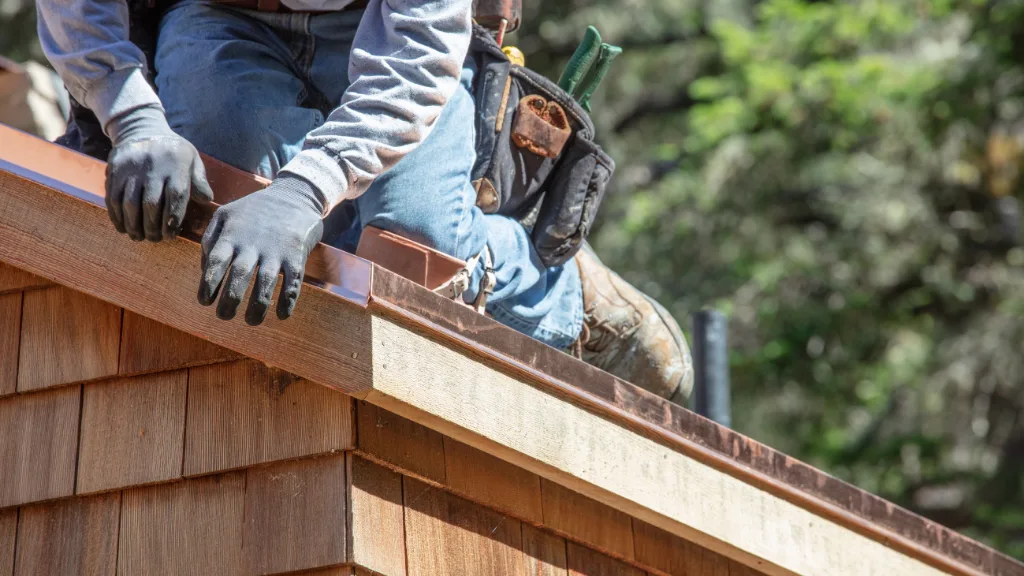
The roof of a building is one of the most important parts. It’s not just there to protect from rain, snow, and other harsh elements; it also provides insulation for the interior of your home.
If you live in a part of North America that experiences cold winters, then roof flashing is an essential element for maintaining this protection. In this blog post we will discuss some things that every homeowner should know about roof flashing so they can keep their house insulated and safe!
What is Roof Flashing?
Roof flashing is a thin metal sheet that roofers apply to deflect water away from certain portions of your roof to include chimneys, walls, and roof valleys. It is an essential roofing material that every roof must-have. Roof flashing is a very important part of roof construction.
It’s what keeps water from leaking into your home and can help to prevent mold growth as well. The material used for the flashing should be durable to withstand weather and other conditions, such as UV rays that can weaken certain materials over time.
Aspects of Roof Flashing
One important aspect to know about roof flashing is that it prevents water from penetrating behind your shingles and damaging the underlying materials. If you have ever experienced a leak in your home, then you probably noticed that there was always some amount of water around where the problem occurred.
This happens when rain penetrates the roofing materials and seeps into the building. The water can damage ceilings, walls, insulation, and even electrical wiring.
Roof flashing is also important for maintaining proper ventilation in your home. Without it, moisture could build up in your attic and cause mold or mildew problems.
If you are unsure about how to install roof flashing, then you should hire a professional roofer. They have the tools and experience necessary to ensure that it is done right so your home will be protected from leaks for years to come!
Roof flashing facts you need to know
The last step in installing a new roof is to install the metal flashing that protects the edges of your roof against water getting into your house. The flashing is installed over the areas where two pieces of roof materials come together, such as at chimneys, vents and dormer walls.
There are several different kinds of roof-flashing products available – roll roofing, self-adhered membranes and standing-seam metal – each with its own installation process. The type of flashing you choose should be based on the material your roof is made from as well as your personal preferences. In general, roofs with asphalt shingles have either a roll roofing or a self-adhered membrane flashing, while metal roofs use standing-seam metal flashing.

- Roll Roofing Flashing
Roll roofing is the traditional way to flash a roof (and the preferred method if your home is on or near the coast) because it can accommodate some movement in your roof. This type of flashing is made of roofing felt or asphalt-coated fiberglass and is installed in a single layer.
The first step is to roll out the flashing material so that it covers the entire area where the roofing materials meet. Then, use a sharp knife to cut the flashing along the lines of the roofing shingles.
Finally, fold the top edge of the flashing down over each shingle, beginning at the top of the wall and working your way down. Overlap each folded flap by at least 2 inches, then secure it to the roof sheathing with roofing nails or screws so that water will never be able to sneak in behind it.
- Self-Adhered Membrane Flashing
Self-adhered flashing membranes are an easy way to protect the joints between roofing materials. The flashing product is made of rubber or plastic that has a strip of adhesive on its underside already applied, so all you have to do is roll it out along the edge of your roof and press it into place.
The membrane should be overlapped by at least 2 inches and then fastened to the roof deck with roofing nails or screws. Make sure to keep the adhesive strip clean and free of debris so that it will stick well.
- Standing-Seam Metal Flashing
Standing-seam metal flashing is the most common choice for metal roofs. It is made of sheets of galvanized steel that are corrugated or formed into tubes, then fastened along the roof edges at joints where they meet.
The seams are normally covered with a rubber flashing product to protect them from water infiltration, but this isn’t always required. Manufacturers also produce special machines that create a standing-seam joint between two pieces of metal, which is a more watertight option than using screws or nails.
No matter which type of roof flashing you choose, always follow the manufacturer’s instructions for installation to ensure that your roof is properly protected against the elements.
How do I check if the roof flashings are still ok?
The best way to check if your roof flashings are still in good condition is to inspect them periodically for any signs of damage or wear. You can also look for water stains around the edges of your roof, which could be a sign that water is getting in where it shouldn’t.
If you do find any problems with your flashing, have them fixed as soon as possible to avoid further damage to your roof and home.

Can I repair them myself?
If you want to save money, then yes – it is possible to repair roof flashings yourself. However, if you’re not sure what you are doing or the flashing has been damaged by severe weather conditions such as high winds and hail storms (which can destroy metal roofs), make sure that a professional takes care of it for you.
Things to Remember about Flashing:
- There are several different types of roof flashing products available, each with its own installation process
- The type of flashing you choose should be based on the material your roof is made from as well as your personal preferences
- In general, roofs with asphalt shingles have either a roll roofing or self-adhered membrane flashing, while metal roofs use standing-seam metal flashing
- Roofing felt or asphalt coated fiberglass is used to roll roofing, self adhered membranes are made of rubber and the most common type for metal roofs is sheet galvanized steel that has been corrugated into tubes. If you’re not sure what kind of material your roof is made from or what flashing type is best for it, check with your roofing contractor.
- Different types of flashings are installed in different ways, so make sure you use the correct installation process when working on yours. For example: if your roof has asphalt shingles then roll roofing should be adhered to the sheathing at the eaves with roofing nails before the shingles are applied.
- It is possible to repair roof flashings yourself, but only if you are confident in your abilities and the flashing has not been severely damaged. In any case, always follow the manufacturer’s instructions for installation.
Conclusion
In conclusion, flashing is important because it helps prevent water from getting into the joints of your roofing materials. It is also important to choose the right type and installation method for your home’s specific flashing needs, so make sure you follow these guidelines carefully when working on yours.

